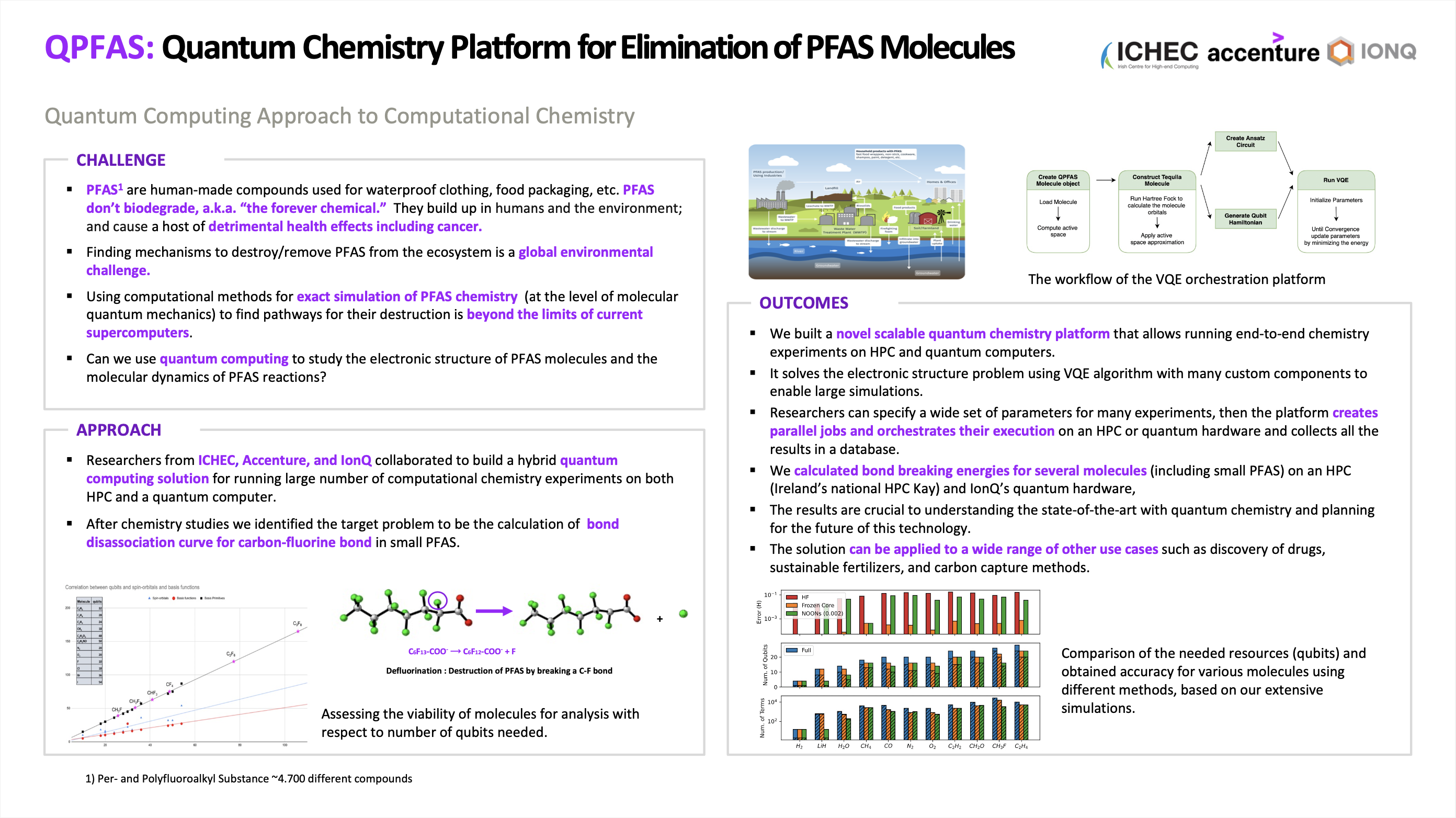Project Start Date
06th Jan 2020
Project End Date
24th Dec 2022
Quantum computing simulation of PFAS (QPFAS)
Accenture, Irish Centre for High-End Computing (ICHEC) and IonQ collaborated to create a scalable software platform for chemistry simulation on quantum computers.
It is used to calculate the energies needed for breaking chemical bonds in molecules such as PFAS. This helps finding mechanisms to destroy PFAS, which are human-made carcinogenic “forever chemicals” that pollute the environment.
The PFAS family is a highly toxic and environmentally detrimental class of chemicals with high mobility and high solubility, which enter the human ecosystem through waterproof coatings, non-stick surfaces in surfaces/cookware, food packaging and Teflon coatings. PFAS can enter the biological system through inhalation, ingestion and absorption via the skin. The health impacts include cancer (of kidney, bladder and liver), thyroid diseases, hormonal changes, increased cholesterol among other conditions.
Therefore, analysis of remediation of PFAS from the ecosystem is crucial and widely studied through wet-lab experiments as well as computational simulation.
The collaboration focuses on the molecular simulation and electronic/chemical properties analysis of PFAS-like molecular structures. Currently, computational models and tools are used with classical HPC for simulation and analysis of molecular structures and their electronic/chemical properties. However, such classical HPC models are computationally expensive and not particularly scalable, which limits the accuracy and the size and number of compounds subject to study.
Approximations need to be done to reduce the computation cost and also to map molecular and electronic properties, which are inherently quantum, for execution on classical computation platforms.
The overall objectives of the collaboration are to:
- Create an end-to-end process to run Quantum Chemistry experiments, taking into account qubit reduction techniques and all necessary quantum inputs.
- Perform as much experiments as possible to define the scalability of the process in terms of molecules' size.
- Conduct an analysis of the larger PFAS-like molecules that can be fit into the supercluster following the quantum workflow.
- Understand the nature of the Variational Quantum Eigensolver and its most accuracy components.





